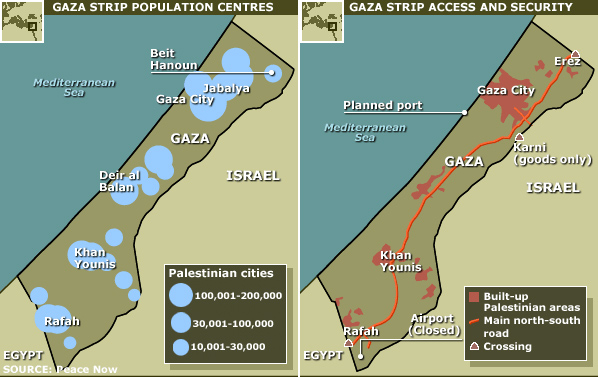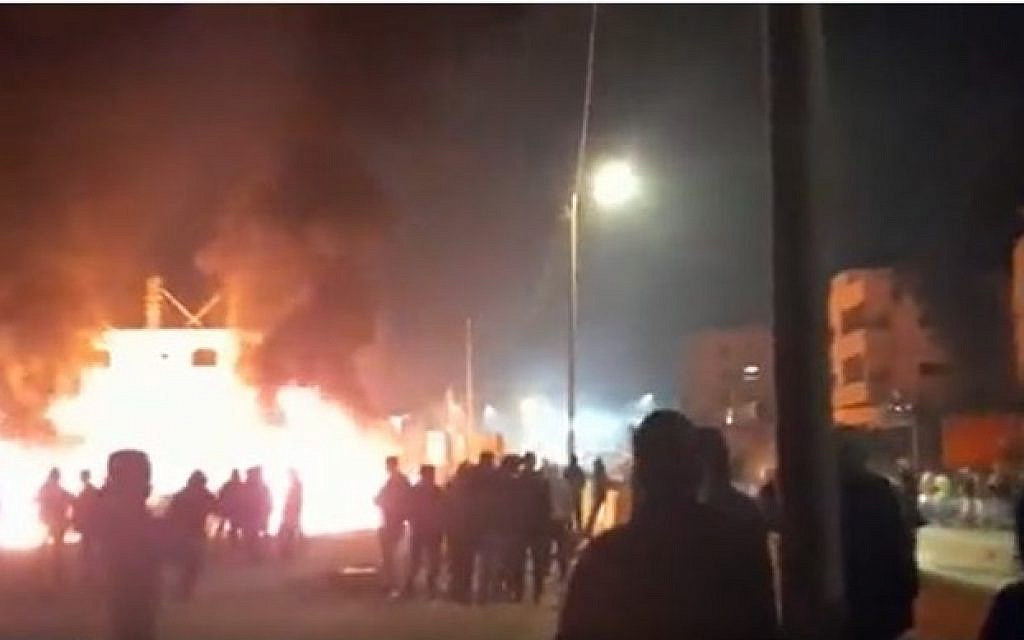UPDATES
The truth about the population density of Gaza and Hamas tactics
August 6, 2014 | Robert Ellenhorn

The piece by former ABC correspondent Peter George, published in three Fairfax papers today, The Age, Sydney Morning Herald and Canberra Times, is replete with misinformation, lack of knowledge, and dubious claims. This is not the place to confront all of them in detail, but one telling example is his repetition of an increasingly common but easily disproven myth – that Gaza is so densely populated, Hamas has no choice but to locate its military infrastructure and launch missiles from built up areas. Here’s what George claims:
“Hamas will continue to fight in the only way it can for as long as it can – from amidst the chaos of a devastated city in one of the most densely crowded places on earth. Some of its attacks will inevitably be launched from heavily populated areas of Gaza. Just about everywhere is densely packed…”
Now first of all, the evidence is overwhelming that Hamas is deliberately locating its weapons in or alongside civilian infrastructure (see video of a journalist showing rockets launched from outside a hotel here). Hamas stores its weapons in schools and mosques, fires rockets from schoolyards and hospital parking lots, and uses a hospital as its major military control centre (for evidence see past AIJAC posts here, here, here and here, plus more on witnessing these techniques comes from returning Israeli soldiers in a story today). Surely it is not “inevitable” that Hamas is forced to employ these sinister strategies.
However, even putting that aside, all it takes to debunk the claim that fighting from civilian areas “is the only way” Hamas can fight because Gaza is so densely packed is to have a good look at Google Earth or another map highlighting where the built-up areas of Gaza are. Here’s an excellent example from the BBC, making it very clear that considerably less than half of Gaza’s land area is built up urban areas:

Harvard Law Professor Alan Dershowitz used this graphic to accompany an article published yesterday by the Gatestone Institute, which debunks the claim that Gaza is so densely populated that Hamas must fight from civilian areas.
Dershowitz writes:
“The fact that these sparsely populated areas exist in the Gaza Strip raise several important moral questions: First, why don’t the media show the relatively open areas of the Gaza Strip? Why do they only show the densely populated cities? There are several possible reasons. There is no fighting going on in the sparsely populated areas, so showing them would be boring. But that’s precisely the point-to show areas from which Hamas could be firing rockets and building tunnels but has chosen not to. Or perhaps the reason the media doesn’t show these areas is that Hamas won’t let them. That too would be a story worth reporting.”
While the media’s failure to show these areas, either out of disinterest, neglect, or under the threat of Hamas’ intimidation (more on Hamas’ intimidation of journalists can be found here), is certainly concerning – perhaps most morally disturbing is that fact that Hamas is choosing deliberately to fight from within civilian areas.
Why would Hamas choose to fight from these areas and operate in such a way that places innocent civilians in harm’s way? (For an earlier piece on this see here) Dershowitz continues:
“Second, why doesn’t Hamas use sparsely populated areas from which to launch its rockets and build its tunnels? Were it to do so, Palestinian civilian casualties would decrease dramatically, but the casualty rate among Hamas terrorists would increase dramatically.
That is precisely why Hamas selects the most densely populated areas from which to fire and dig. The difference between Israel and Hamas is that Israel uses its soldiers to protect its civilians, whereas Hamas uses its civilians to protect its terrorists. That is why most of Israeli casualties have been soldiers and most of Hamas’ casualties have been civilians. The other reason is that Israel builds shelters for its civilians, whereas Hamas builds shelters only for its terrorists, intending that most of the casualties be among its civilian shields.”
The tragic fact is that while Hamas could conduct its operations in a way that minimises the chances its civilians would be caught in the crossfire of war; it has no interest in doing so. Yet those who choose to defend Hamas simply refuse to acknowledge that Hamas fights from densely populated areas and embeds its military infrastructure in schools, homes, and mosques – despite the overwhelming evidence proving otherwise (see here).
Forced to confront this evidence, some commentators, including George, latch on to a completely fanciful and easily disproven claim that Hamas has no choice but to fight from these areas. It is amazing what people determined to put forth a narrative – which denies culpability on the part of Hamas – will write to try and substantiate their claims even as Hamas commits blatant war crimes against both its own people and Israel.
Robert Ellenhorn
Tags: Israel





